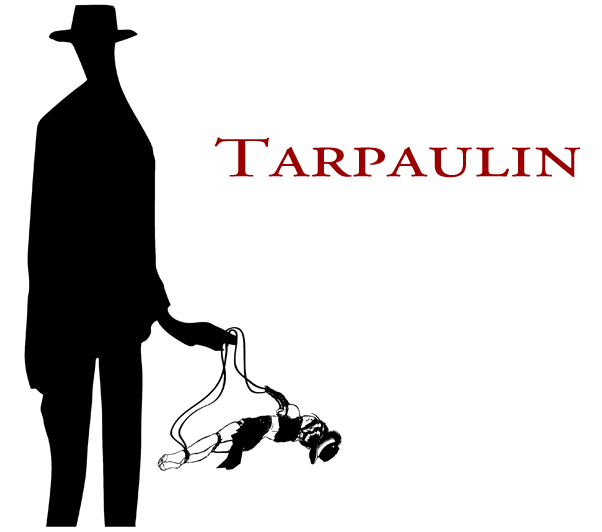Ordinary Sun
ISBN: 978-0-9844752-2-3
Poetry / 120 pp. / pbk.
Black Ocean, 2011
$14.95
Reviewed by Erin Lyndal Martin
One of the most infamous images in Luis Buñuel's iconic film Un Chien Andalou is the scene in which a woman's eye is slit. Immediately, the omniscience of the narrator is shattered, opening the movie up to many interpretations and therefore many authors.
Similarly, Matthew Henriksen's Ordinary Sun opens with the line "An eye is not enough," splintering the reader's point of view before the text is even begun. "What I cannot find in the morning is most myself," concludes the third poem, further asserting the transparency of the narrator; the second line of the following poem reads "where I was beyond repair." Even the book's structure mimics that fragmentation, being comprised of many subtitled sections, including two from Henriksen's previous chapbook, Is Holy (horse less press).
In an interview with HTML Giant, Henriksen reveals that many of the poems were originally in prose and then lineated later, furthering the fractured nature of the book, the poems as once-whole paragraphs obliterated into linebreaks. In the same interview, Henriksen, describing his process, says "Just revise back and forth until no form but a formless certainty makes sense?"
And it does make sense in a book like Ordinary Sun. The anonymity of the narrator isn't a problem here—in fact, it's often an asset, for the images seep easily through the narrator's porous membrane of observation. In "Groves," the quiet self allows for the other images to rise above the din of ego:
The peach trees meant to melt under the sky,
which was the pale phantom of every sky I knew.
I questioned my arrival with the authority of amnesia.
Surely, one before me had scratched questions in the bark.
Here, the amnesiac "I" forgets itself among the melting peach trees and the pale phantoms of skies past. Many reviews have focused on the natural imagery present in Ordinary Sun, but most of the book was written in Brooklyn, according to Henriksen's wife, Katy, who wrote this essay about the Brooklyn pastoral. The Brooklyn pastoral is a concept well-deployed by Matthew Henriksen throughout these poems, wherein the so-called natural and the urban ring out with equal resonance. "Ghost" opens thus:
Heaven must subject itself to the city for
the city to lose function. A throng of sparrows
and one gutter pipe must be all that sing.
The multitudes wilt from their professions and,
thus, professing. Hollyhocks taking in light are merciless.
Here, the gutter pipe and the sparrows alike sing. Hollyhocks surround the city, the multitudes wilting (equating the urban masses with nature). In "Corolla in the Midden," Henriksen writes:
[…]where the world works out
what the world will between
fuel and flesh, as shape
precedes color, the Greek said,
but not on this lawn
without chemicals and rich down
in that city dirt. Each leaf denies
another nightmare in its scent.
Later in the same poem, Henriksen remarks that a snakeskin begins to resemble worm skin beneath a "yellow-amber spent bulb." "I see this kind of shit / often but not more often than I like," he goes on to say, implying that the symbiosis of the artificial and natural are everyday occurrences in the speaker's existence. In this poem, the world works itself out "between / fuel and flesh" and therefore between the technological and the corporeal. "When I don't sleep I can sleep / with crickets or trucks," "Corolla in the Midden" continues. In "Copse," there is a reference to "the helicopter's sigh." Here, Henriksen evokes Auden's sympathetic fallacy of city life in "In Memoriam, William Butler Yeats:"
The brooks were frozen, the airports almost deserted[…]
But in the importance and noise of to-morrow
When the brokers are roaring like beasts on the floor of the Bourse,
And the poor have the sufferings to which they are fairly accustomed,
And each in the cell of himself is almost convinced of his freedom,
A few thousand will think of this day
As one thinks of a day when one did something slightly unusual.
To center some of Henriksen's antecedents with more precise geography, one also thinks of Whitman's "Crossing Brooklyn Ferry:"
Just as you feel when you look on the river and sky, so I felt;
Just as any of you is one of a living crowd, I was one of a crowd;
Just as you are refresh’d by the gladness of the river and the bright flow, I was refresh’d;
Just as you stand and lean on the rail, yet hurry with the swift current, I stood, yet was hurried;
Just as you look on the numberless masts of ships, and the thick-stem’d pipes of steamboats, I look’d.
The "multitudes" of Henriksen, the "brokers" of Auden, and the "crowd" of Whitman ultimately amount to the same observation of the convergence of the urban and the natural. But Henriksen is more aligned with Whitman, for both poets question the concept of the self among the urban pastoral. Perhaps this is the true query of Henriksen's narrator posited as permeable—when in the urban landscape, one must take in both "natural" and "artificial" images with the same awe among throngs of others who absorb the same images, the same "kind of shit."
* * *
Erin Lyndal Martin is a poet, fiction writer, and music journalist, and is associate fiction editor at H_ngm_n. Her work has recently appeared in Typo, Diagram, and Bust.





